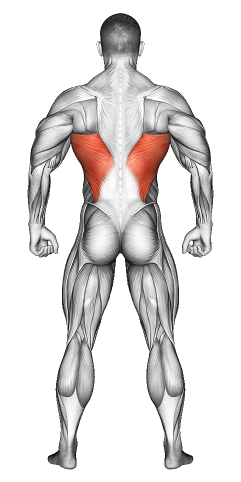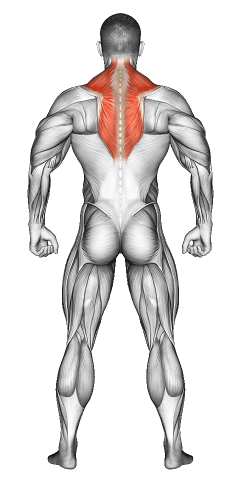Underhand Pull Up: Video Tutorial & Exercise Guide

Written By: Claude Michael
Updated: Oct 13, 2024
| Workout | Underhand Pull Up |
| Primary Muscle Group | Lats |
| Secondary Muscle Group | Traps |
| Equipment Required | Pull-up Bar |
| Force Type | Pull |
| Mechanics | Compound |
| Exercise Type | Strength |
| Difficulty | Intermediate |
Underhand Pull Up: Video Tutorial & Exercise Guide
- 1.Underhand Pull Up: Muscle Groups
- -1.1Primary Muscle Group
- -1.2Secondary Muscle Group
- 2.Underhand Pull Up: Step-by-Step Guide
- 3.Underhand Pull Up: Overview
- 4.Underhand Pull Up: Benefits
- 5.Underhand Pull Up: Pro Tips & Advanced Techniques
- 6.Underhand Pull Up: Progression Plan
- 7.Underhand Pull Up: Frequently Asked Questions (FAQs)
Secondary Muscles Group
Underhand Pull Up (Chin-Up): Step-by-Step Guide
- Step 1: Grab the pull-up bar with an underhand (supinated) grip, hands about shoulder-width apart. Let your arms fully extend, and keep your feet off the ground with your body in a straight line.
- Step 2: Engage your core and initiate the movement by pulling your chest up toward the bar. Focus on driving your elbows down and back.
- Step 3: Continue pulling until your chin clears the bar. At the top, squeeze your shoulder blades togClaude to fully engage your back muscles.
- Step 4: Slowly lower yourself back to the starting position with control, fully extending your arms while keeping your body stable.
- Step 5: Repeat for the desired number of reps, ensuring you maintain proper form and avoid swinging or kipping.
Underhand Pull Up (Chin-Up): Overview
The Underhand Pull Up, also known as the chin-up, is a bodyweight exercise that targets your back and biceps, with an emphasis on the biceps due to the underhand grip. It’s a versatile compound movement that improves upper-body strength and muscle endurance.
Chin-ups are slightly easier than traditional pull-ups because the underhand grip recruits more bicep involvement. This makes chin-ups a great exercise for building arm strength while still focusing on your back muscles.
Underhand Pull Up (Chin-Up): Benefits
The chin-up primarily works the biceps and lats, making it an effective exercise for building arm and upper back strength. It also engages the shoulders, core, and forearms, providing a full upper-body workout.
Chin-ups can help improve posture, increase grip strength, and enhance pulling strength, which carries over to other compound lifts like rows and deadlifts. They are also great for muscle hypertrophy in the arms and back.
Underhand Pull Up (Chin-Up): Pro Tips & Advanced Techniques
To maximize effectiveness, focus on using your biceps and lats to pull yourself up rather than relying on momentum. Keep your elbows close to your body as you pull and avoid swinging. For an added challenge, try weighted chin-ups by adding a weight belt or vest. Want to improve your form? Slow down the lowering phase to increase muscle tension and control.
Underhand Pull Up (Chin-Up): Progression Plan
Beginner
Intermediate
Advanced
Underhand Pull Up: Frequently Asked Questions (FAQs)
What muscles do chin-ups target?
+Chin-ups primarily target the biceps and lats. They also engage the forearms, shoulders, and core for stabilization.
How do chin-ups differ from pull-ups?
+Chin-ups use an underhand grip and emphasize the biceps more than pull-ups, which use an overhand grip and focus more on the back muscles.
What’s the best way to progress in chin-ups?
+Start with assisted chin-ups or negative chin-ups (focusing on the lowering phase). Gradually reduce assistance and work on increasing the number of reps and sets as you build strength.
How often should I do chin-ups?
+Incorporate chin-ups 1-2 times per week as part of your upper-body routine. They pair well with other pulling exercises like rows and deadlifts.
What common mistakes should I avoid?
+Avoid swinging your body or using momentum. Focus on controlled movements and maintaining proper form throughout each rep.
Share
Don’t Wish for It, Work for It – Join the FlexXP Newsletter Today!
Thank you for signing up for the FlexXP Newsletter!
This site is protected and the Google Privacy Policy and Terms of Service apply.

